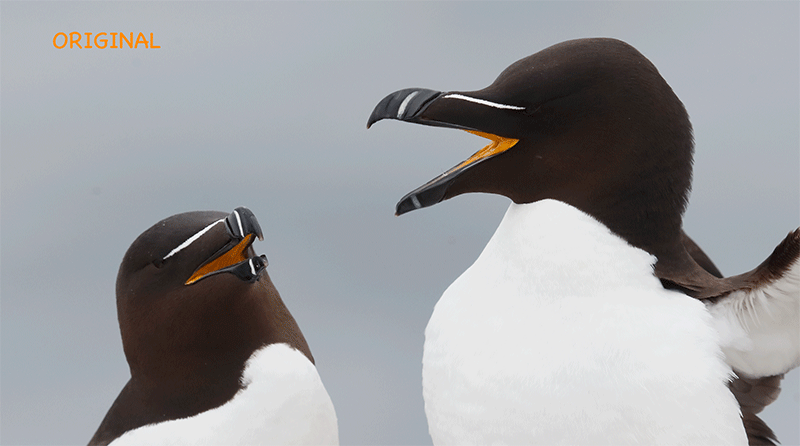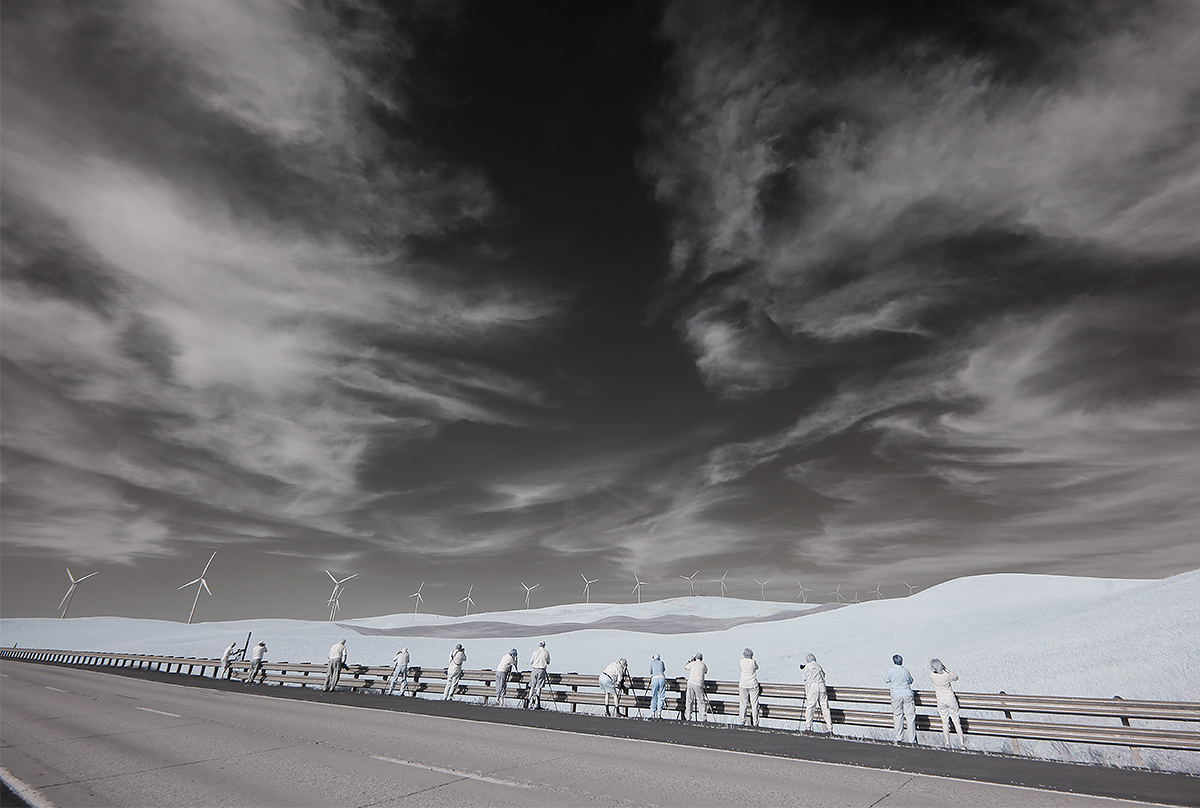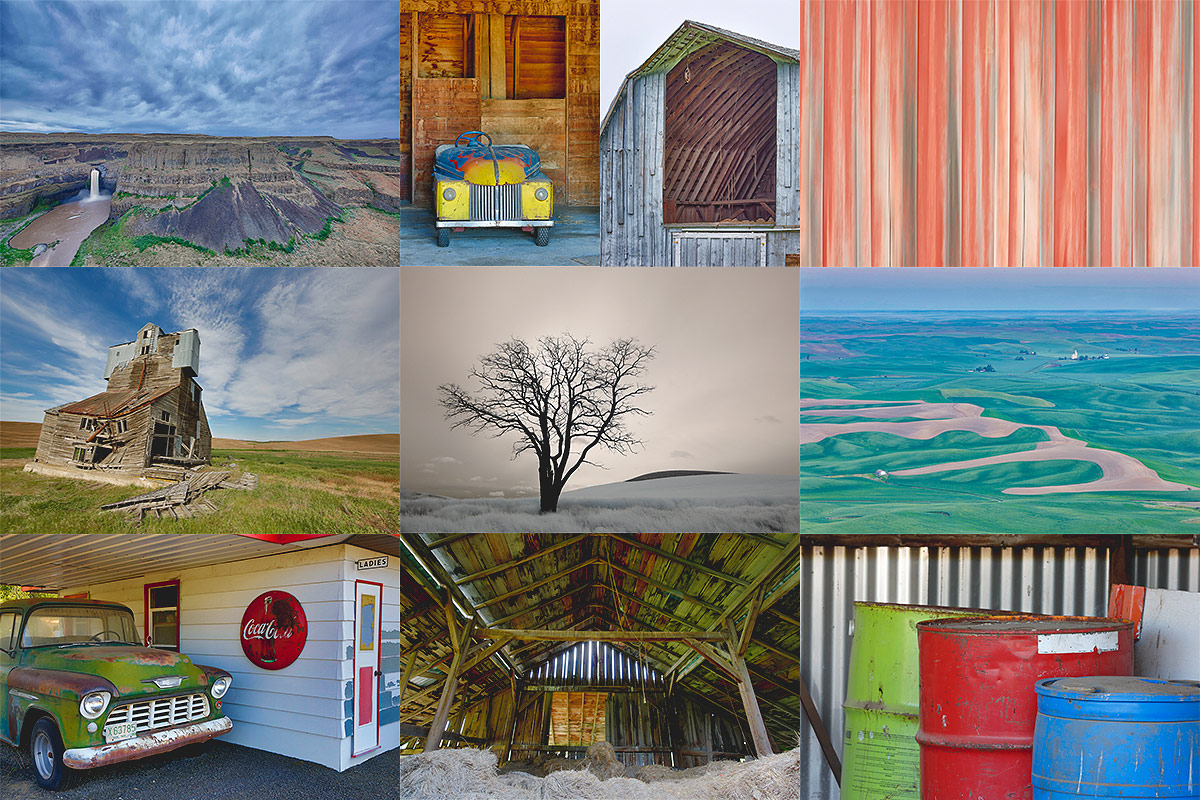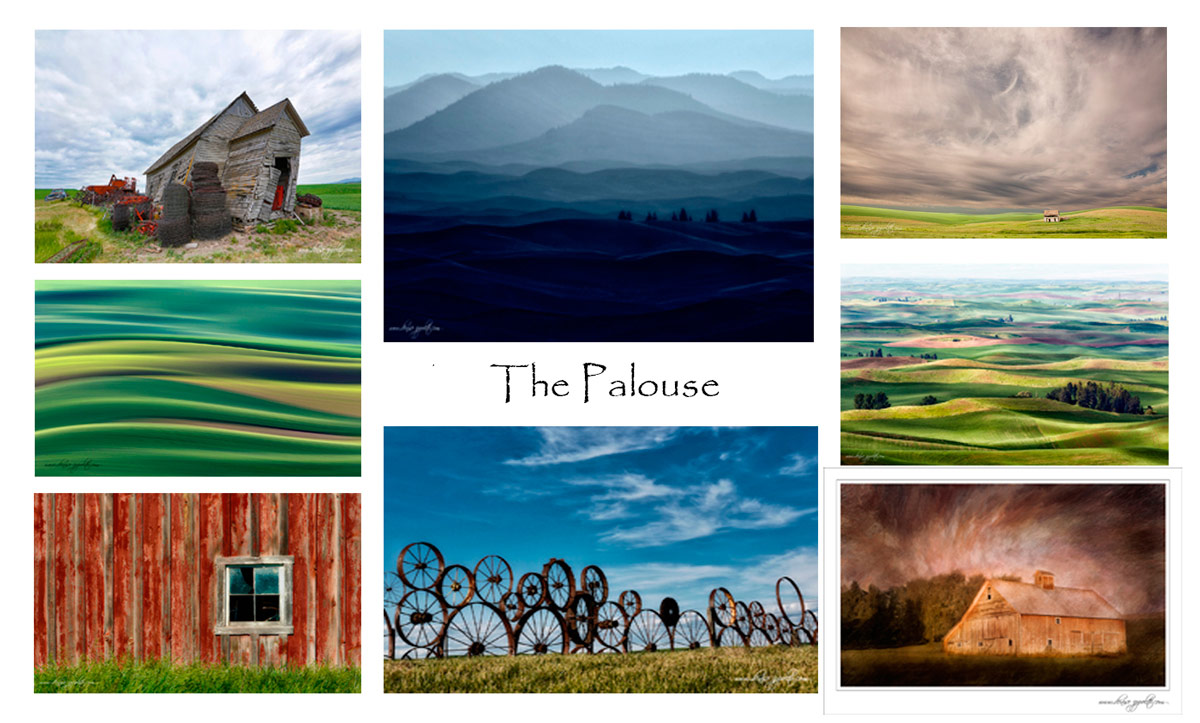Stuff
Yesterday was a fairly relaxing day. I packed one of my two checked bags and my gear bag; details on the latter in tomorrow’s blog post. I still have to to pack my second checked bag, my Think Tank Urban Disguise laptop bag, and my Xtrahand vest but I have lots of time as my flight to Islip is at 3:00pm this afternoon. After two days of rest and some stretching my right shoulder is feeling a lot better. As am I. 🙂
This blog post took about an hour to assemble. It was published just before 6:00am on Monday, August 10 from my home in Indian Lake Estates, FL.
2nd Chance Challenges…
At times–after a while–folks start to take the blog for granted and get a bit lazy. Sure, most read it every day, but with a few specific posts folks lately have not been that interested in answering my questions by leaving a comment. The purpose of the blog it to get you to think and therefore to have everyone learn. In today’s blog post I will re-post two images, each with a previously ignored question. I challenge each of you to come up with a good answer. An interactive blog is a better blog….

Before and after animated GIF. Note the browner tones and the much-improved eyes in the optimized version…. |
Important Exposure Question
In the “Dealing With Those Hard to See Eyes…” blog post here, I posted the animated GIF above and the question below. The answer to the questions reveals an important exposure principle, one that all good photographers should have completely mastered. I know from experience that few have done that. Do take a crack at it. I will be posting the answer and the explanation soon.
High Level Exposure Question
Why are the irises of Razorbills underexposed by about 1 1/2 stops in a properly exposed RAW file?
Image #2: Another version |
Slightly Less Important Image Design Question
In the “Palouse Group Infrared Wind Turbine Image” blog post here, I posted the following with regards to both images.
Image Design Question
Do you like the little black triangle in the lower left corner? Why or why not?
|
Subject and focal lengths from upper left to right and then around to center. Palouse Falls: 11mm; homemade kiddie race car: 105mm; barn siding pan blur: 798mm; Rolling fields diorama: 110mm; Crayola drums: 343 mm; Hay barn interior: 19mm; vintage gas station: 40mm; Dilapidated farm building: 13mm; Denise’s tree Infrared: 20mm. Images and card design by Arthur Morris/BIRDS AS ART. |
The Palouse ~ A Creative Adventure/BIRDS AS ART Instructional Photo-Tour (IPT)/Eastern Washington State. June 3-7, 2016/5 Full Days: $1699/Limit 12
The Palouse ~ A Creative Adventure/BIRDS AS ART Instructional Photo-Tour (IPT)/Eastern Washington State. June 10-14, 2016/5 Full Days: $1699/Limit 12
Double Header!
Maximize both your travel dollars and your learning experience by signing up for both IPTs.
|
Images and card design by Denise Ippolito/A Creative Adventure. |
The Palouse IPTs
Rolling farmlands provide a magical patchwork of textures and colors, especially when viewed from the top of Steptoe Butte where we will likely enjoy spectacular sunrises and possibly a nice sunset. We will photograph grand landscapes and mini-scenics of the rolling hills and farm fields. We will take you to some really neat old abandoned barns and farmhouses in idyllic settings. There is no better way to improve your compositional and image design skills and to develop your creativity than to join us for this trip. Two great leaders: Denise Ippolito and Arthur Morris. Photoshop and image sharing sessions when we have the time and energy…. We get up early and stay out late and the days are long.
After 6 days of back-breaking scouting work in early June 2014 we found all of the iconic locations and, in addition, lots of spectacular new old barns and breath-taking landforms and views. On three additional scouting days in 2015 we discovered several more truly amazing locations. We will teach you what makes one situation prime and another seemingly similar one a waste of your time.
What’s included: In-the-field instruction, guidance, lessons, and inspiration, our newfound but very extensive knowledge of the area, all lunches, motel lobby grab and go breakfasts, and Photoshop and image sharing sessions when possible. There will be a meet and greet at 7:30pm on the evening before each workshop begins.
You will learn and hone both basic and advanced compositional and image design skills. You will learn to get the right exposure every time. You will learn to develop your creative eye. You will learn the basics of HDR (high dynamic range) photography. You will learn a variety of in-camera creative techniques. Most importantly you will learn to see the situation and to create a variety of top-notch images. Do see both of our blogs for lots more on that in the coming weeks. You will learn how the quality and direction of light combine to determine the success of your images. And–please don’t gasp–we will be working quite a bit with sidelight when creating landscapes. Lastly, we will be doing some infrared photography.
To Sign Up
A non-refundable $699 deposit is due now. The balance will be due on February 15, 2016. If we do not receive your check for the balance on or before the due date we will try to fill your spot from the waiting list. Whether or not your spot is filled, you will lose your deposit. If not, you can secure your spot by paying your balance.
With the spectacular success that we enjoyed in 2015 it seems quite likely that this one will fill up very quickly. Please let me know via e-mail that you will be joining us. Then you can either call Jim or Jennifer at 863-692-0906 during business hours or send us a check to leave a deposit; the latter is preferred. If by check, please make out to “Arthur Morris” and mail it to: Arthur Morris/BIRDS AS ART, PO Box 7245, Indian Lake Estates, FL, 33855. If you have any questions, please feel free to contact us via e-mail: artie or denise.
Travel Insurance Services offers a variety of plans and options. Included with the Elite Option or available as an upgrade to the Basic & Plus Options. You can also purchase Cancel for Any Reason Coverage that expands the list of reasons for your canceling to include things such as sudden work or family obligation and even a simple change of mind. You can learn more here: Travel Insurance Services. Do note that many plans require that you purchase your travel insurance within 14 days of our cashing your deposit check. Whenever purchasing travel insurance be sure to read the fine print carefully even when dealing with reputable firms like TSI.
Be sure to like and follow BAA on Facebook by clicking on the logo link upper right. Tanks a stack!
Support the BAA Blog. Support the BAA Bulletins: Shop B&H here!
We want and need to keep providing you with the latest free information, photography and Photoshop lessons, and all manner of related information. Show your appreciation by making your purchases immediately after clicking on any of our B&H or Amazon Affiliate links in this blog post. Remember, B&H ain’t just photography!
Amazon.com
Those who prefer to support BAA by shopping with Amazon may use this link:
Amazon Canada
Many kind folks from north of the border, eh, have e-mailed stating that they would love to help us out by using one of our affiliate links but that living in Canada and doing so presents numerous problems. Now, they can help us out by using our Amazon Canada affiliate link by starting their searches by clicking here. Many thanks to those who have written.
Typos
In all blog posts and Bulletins, feel free to e-mail or to leave a comment regarding any typos or errors. Just be right :).

















Hi!
If you get the whites “right” the eye will have to be under-exposed. The triangle defines the road and is needed.
Yep, need to keep the blinkies in check, so the proper exposure was not about the eyes, but about the whites. You can draw from darks, which you demonstrated. Trust you used a quick mask to do the adjustment on the head. Great tool! Thanks.
Re the triangl, adds nothing for me. The photo oi about the people photographing the wind mills and wonderful sky. The triangle seems distracting.
Thanks for encouraging the response.
Frank
Hi Artie
My wife & I are scheduled for a trip to S. Africa from 11/9 through 11/28/2015. I researched several travel insurance companies, Including, USI, which is advertised on your site. Do you have any personal experience with USI, underwritten by Travel Guard under the umbrella of AIG? Have you heard of any negative experience with this carrier?
A quick response would be most appreciated.
Thank you.
Joe Parisi
Marco Island, FL
Hi Joe, I have used TSI myself for several big trips. I have never had to make a claim. I have not heard a single bad word about them. As for all travel insurance, my advice is that folks read the fine print before they purchase, not after they make a claim. TSI’s “cancel for any reason” is pretty simple, but still I would read the fine print very carefully.
a
Image Design Question – Palouse Group Infrared Wind Turbine Image Do you like the little black triangle in the lower left corner? I like the small triangle because it gives “closure” and size to the road relative to the enormous scene of sky and wind turbines.
I like the triangle. It acts as a “postscript”. On first view you take in the image, and quickly form an impression. Then you note the triangle of road included, and you suddenly have a different understanding of the image.It forces you to take a second, longer look at the image. Very effective. I think THAT is more important then how it adds to the composition.
Hi Artie,
On the Razorbill photo when exposing to the right on the histogram without any clipping of the whites with your white point at approx 235 to 240 the dynamic range of the photo forces the darkest point way to the left or close to zero which results in an underexposed iris. Even though it looks cloudy, the subjects appear to be somewhat backlit which will add additional shadow to the eye socket.
The triangle for me defines the road really well, but it causes my eye to follow the road first and then start scanning the rest of the image. It is a distraction because it becomes the main leading line of the image. Great perspective of the road though!
Thanks for helping us learn!
My Best,
Wayne
I like the triangle. In my mind it completes to the series of lines that are already in place; the dashed line in the road, the edge of the road, the fence, the edge of the hillside, the line up of the wind turbines and finally, the faint line in clouds – all chasing your eye from left to right. Without the triangle it would feel a little flat.
Why are the irises of Razorbills underexposed by about 1 1/2 stops in a properly exposed RAW file?
You are exposing to keep detail in the whites. The contrast between whites and black eyes is so great, the camera can’t handle that much contrast and can’t give much if any detail in the blacks.
Do you like the little black triangle in the lower left corner? Why or why not?
I do like it. It defines the highway as to size.
I do like the triangle corner… It gives the photo balance, scale, and finality… and gives the highway definition and placement…otherwise looks like highway is major part of the photo…
Great job… Enjoy your trip…
The little black triangle, I like it as it compliments the triangular appearance of the outside points of each of the blades on the turbines and because it gives perspective to the width of the road. If it were not in the frame you would have a scalene triangle in the shape of the road. So either way I personally would like it.
Hi Art,
I don’t know the answer to the question but my thoughts are that by over riding the meter system by the 1 and half stop under exposure the irises could not be visible as they are darken than the dark brown that surround the eyes.
The bit of the edge of road showing keeps you in a rural road and not in a parking lot. Yes i like it.
You lightened just the eyes and cheeks to balance out the black and white feathers with having detail in both.
Here’s my shot:
Why are the irises of Razorbills underexposed by about 1 1/2 stops in a properly exposed RAW
file?
I agree with all that you had to protect the whites and make sure you had detail there. The really white whites and dark darks lend to a very large Dynamic Range, so you just cant capture the entire range. Therefore, you need to protect the whites and recover the darks in post.
Do you like the little black triangle in the lower left corner? Why or why not?
That is an interesting question. At first I did not even really notice it, so I can’t say it is real distracting. Then, when I did notice it, it did seem distracting – pulling the eye where it shouldn’t be. (I believe the strong leading lines are what kept me from seeing it the first time!) I agree it helps give the road dimension, etc, but I think when I am looking at the photo, I am not worried or thinking about the road. I am following the line of people to the left, then the windmills back to the right, then looking at landforms and sky. So, my final answer is: I don’t think it is needed for “balance” or perspective, but I did not find it distracting. To me, the actual problem with “cropping” it out was that the person on the right would be too close to the bottom of the frame and/or the windmill to the left would be too close to the edge of the frame.
Also, cropping it out would change the way the line of people/guardrail and the line of windmills/hills intersect to the left. There is kind of a”vanishing point” out there and that effect seemed to be a lot less when I cropped the image.
Just my thoughts. Don’t know if this makes sence to anyone else!
Warren
Looking again at your specific question about the Irises, do the Razorbill eyes sit back under a ridge of feathers? It looks like the very small eyes are set back and are in a shadow, which would mean they are darker, even though the rest of the image is properly exposed.
They are not as deeply set as those of some birds but IAC, that is only a very small part of the equation. artie
Does it have anything to do with light being absorbed by dark (matte) materials, like feathers and less light reflected? You know, like athletes putting black under their eyes to absorb like and reduce reflected light back to their eyes…
I know, I have really gone out on a limb here, but you wanted interaction…
Interaction is good. But answer is incorrect 🙂 artie
I’m no expert (or near it), my opinion is that a one third/half stop + exposure compensation may have helped or the use of your flash better beamer may have helped to lift the detail in the almost black eye at the time of capture.
I had the same trouble in taking pictures of razorbills on the Saltee Islands (off the Irish coast) and the only way I could get the exposure close was in post processing (RAW conversion) by using a selective brush tool to increase the exposure on the eyes as I did not use a fill in flash.
Hi Fintan, Yes. Flash would have helped to lighten the pupil. But that was no the question 🙂 I have one good one that was made with the 7D II pop-up flash that I will post.
Hi Art. I do not answer because generally, I do not know the answer – simple as that. Often I do not have the experience to draw on to even come close.
Little triangle – I do not like it because, to me, it is a distraction. My 0.02¢ FWIW.
Regards,
Ron
Hi, Artie, and thanks. Sometimes I don’t answer because I don’t know the answer. (Of course, sometimes I do answer when I don’t know the answer. 🙂 ) In this case, I agree completely with Loren Charif’s answer.
Little Black Triangle:
I like it, provides emphasis with scale, distance, depth, tone continuity with rest of image, contrast with roadway tones and people clothing tones.
under exposure = not blowing out the whites
With a white and black/dark brown bird you always have to err in protecting the highlights because if they blow then the detail is lost. With the shadows you at least have some more leeway to pull them up and get some detail. A sony sensor would make this much cleaner and easier but Canon is still fairly good. Therefore in this image to protect the whites you needed to underexpose the dark iris of the razorbill.
I like the inclusion of the triangle as it shows how wide the road is and gives a better leading line for the diagonal road. I would prefer a more panoramic crop to that image…sky is nice but I think there is too much of it.
1. Why are the irises of Razorbills underexposed by about 1 1/2 stops in a properly exposed RAW file? Exposing to bring up the irises would have burned out, and therefore lost detail in the whites. Since the whites are such a large portion of the image, impact on overall exposure is greater, thus the need to pull up the irises in post.
2. Do you like the little black triangle in the lower left corner? Why or why not? Not so much a matter of liking or disliking; it’s important to the balance of the image so that the road would not appear wider than it is. I suppose one could make the argument that it’s a distraction, but, I’m not bothered by it.
Damn…hit Submit too soon…Forgot to mention that the triangle helps add a bit of perspective to the road and therefore the entire image.
1. You’re placing the whites at a stop and a half of underexposure, relative to the correct middle tone exposure. This, in turn, makes the irises & brown feathers even darker, so you lightened them, to get to a satisfactory result.
Thanks Cris. On the Razorbill image, how and why does what you wrote affect the exposure of the darker than a middle-tone irises?
artie
Hi Art – I’ll take a crack at your questions.
1. Razorbill needs to be underexposed by 1 and a half stops to keep the brilliant whites from being burned out. This will give clean, bright whites while maintaining feather detail.
2. Wind turbine pic – It definitely needs the triangle in the bottom left because it gives the viewer a sense of dimension and scale. Without it, the picture isn’t balanced.
….from your Roseate Spoonbill-Ft. DeSoto class in Feb. 2015.